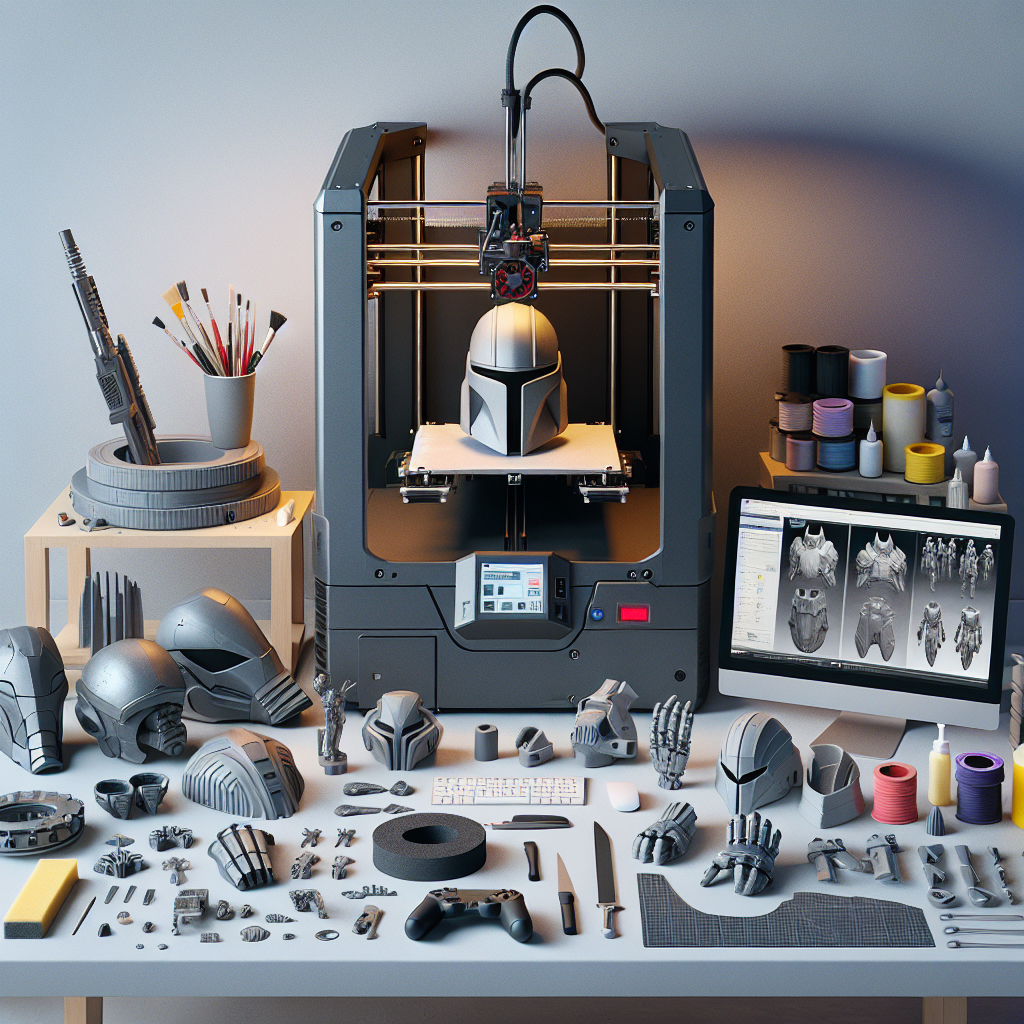The Rise of 3D Printing in Cosplay
Cosplay has evolved from simple costume crafting to a high-tech art form, and 3D printing is at the heart of this transformation. From intricate armor sets to detailed props, hobbyists and professionals alike are leveraging 3D printing to create pieces that were once impossible or prohibitively time-consuming to build by hand. As a veteran in the 3D printing space, I’ve seen firsthand how this technology has empowered creators to push the boundaries of what’s possible in cosplay.
Why 3D Printing is a Game-Changer for Cosplayers
Traditional prop-making involves sculpting, molding, casting, and often a lot of trial and error. 3D printing streamlines this process by allowing cosplayers to turn digital designs into physical objects with remarkable accuracy. The technology offers several key advantages:
- Precision: Highly detailed designs can be replicated down to the smallest feature.
- Customization: Props and accessories can be tailored to fit the wearer perfectly.
- Repeatability: Props can be reproduced as needed for group cosplays or replacements.
- Access to Designs: Online repositories like Thingiverse, MyMiniFactory, and Cults3D house thousands of fan-made models ready to print.
Top 3D Printed Props and Accessories in Cosplay
Let’s dive into some of the most popular and impressive 3D printed items for cosplay, along with a few expert tips for each.
1. Helmets
Nothing completes a superhero or sci-fi character like a flawless helmet. From Iron Man to Mandalorians, 3D printed helmets are among the hottest items in cosplay. Resin printers can achieve smooth surfaces for finishing, while FDM printers are preferred for their size and durability.
Pro Tip: Print helmets in multiple sections for a better fit and easier post-processing. Use magnets or hidden clasps to assemble pieces seamlessly.
2. Weapons and Blasters
Whether it’s a lightsaber, Buster Sword, or Portal Gun, iconic weapons are must-haves for many cosplayers. 3D printing enables you to build props at full scale—lightweight but sturdy, and with electronic components like LEDs integrated directly into the design.
Pro Tip: Reinforce large, thin areas with internal supports or dowels. Sand and prime your pieces before painting for a professional finish.
3. Armor and Gauntlets
Full-body armor sets from franchises like Halo, Destiny, or The Witcher are easier to tackle with 3D printing. You can print armor in overlapping segments for flexibility and comfort, and scale pieces to your exact measurements.
Pro Tip: Use flexible filaments like TPU for joints or areas requiring movement. Print test pieces to check fit before committing to full-scale armor parts.
4. Masks and Faceplates
Spider-Man lenses, Sub-Zero masks, or even intricate masquerade designs can all be produced with a high level of detail. 3D printing allows you to experiment with different shapes and even embed mesh or transparent materials for special effects.
Pro Tip: For comfort, line the inside with foam or fabric. Consider using transparent resins or PETG for see-through elements.
5. Jewelry and Small Accessories
Don’t overlook the impact of finely detailed rings, pendants, or badges. 3D printers—especially resin models—can handle the tiny details needed for jewelry and insignia, perfect for adding authenticity to any costume.
Pro Tip: Paint with metallic finishes or electroplate for a real metal look. Print multiples for group cosplays, or as backup in case of loss.
Choosing the Right Printer and Material
FDM printers (like the Prusa i3 MK3S+ or Creality Ender 3) are great for large armor pieces, while resin printers (such as the Anycubic Photon Mono X or Elegoo Mars) excel at small, detailed props. PLA is the go-to filament for ease of use, while ABS and PETG offer greater strength and heat resistance. Flexible filaments are perfect for straps and joints.
Finishing Techniques for a Polished Look
Raw 3D prints rarely look screen-ready. Here are some essential steps to elevate your props:
- Sanding: Smooth out layer lines with varying grits, starting from coarse to fine.
- Priming: Fill gaps and prepare the surface for painting.
- Painting: Use spray paints, airbrushes, and hand-painted details to bring your prop to life.
- Weathering: Add scuffs, burns, and grime for authenticity.
- Assembly: Use strong adhesives, magnets, or screws for modular props.
Resources for 3D Printable Cosplay Files
Some of the top sites for finding cosplay-ready 3D models include:
- Thingiverse
- Cults3D
- MyMiniFactory
- CGTrader
- Independent artists on Etsy and Patreon
Always credit designers and support creators when possible—many offer premium files with higher detail or easier assembly.
Final Thoughts
3D printing has unlocked an era of creativity and accuracy in cosplay that was unimaginable just a decade ago. Whether you’re gearing up for a convention or building your dream costume, the technology puts professional-quality props and accessories within reach. With the right tools, materials, and a bit of practice, you can bring any character to life—one layer at a time. Happy printing!

Leave a Reply